Exploring Different Comic Book Art Styles
Dive into the world of comic book art style! Learn how styles influence storytelling and see how artists bring heroes to life.
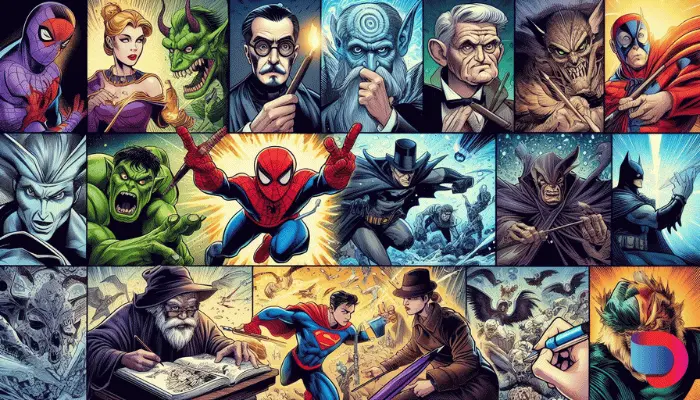
Introduction to Comic Book Art Styles: A Visual Feast for Storytellers
Have you ever been captivated by the electrifying action of a superhero comic or the delicate emotions conveyed in a slice-of-life manga panel? Each page is a visual symphony, and the comic book art style plays a crucial role in conducting the orchestra. From the bold lines of manga to the dynamic poses of Western comics, these styles aren't just window dressing – they're essential storytellers in their own right.
This guide will take you on a thrilling journey through the ever-evolving world of comic-style art. We'll explore how these styles have been shaped by genre, age group, historical context, and even the artists themselves. We'll also delve into the significance of visual representation in comics, uncovering how the art style itself can enhance the narrative and create an even more immersive reading experience.
So, stay put, aspiring artists and comic enthusiasts alike! This is your chance to unlock the secrets behind the stunning visuals that bring your favorite comic book stories to life.
If you're looking to unleash your creativity and bring unique characters to life, check out Dashtoon's comic character maker.
Early Influences and the Golden Age: From Simple Sketches to Iconic Heroes (1930s-1950s)
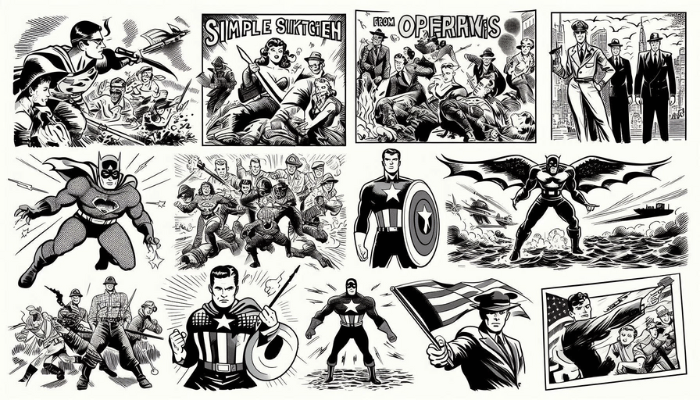
Imagine a time before the hyper-realistic muscles and flowing capes of today's superheroes. The early days of comic books, in the 1930s and 1950s, were marked by a simpler, cartoonish style. Think Sunday morning newspaper comics, with bold outlines and characters that favored expressiveness over anatomical accuracy.
But don't underestimate the impact of these early pioneers! Legendary artists like Jack Kirby and Joe Shuster laid the groundwork for the iconic superhero aesthetic. Kirby, known as the "King of Comics," brought dynamism and a sense of grand scale to his work, while Shuster's iconic design for Superman, with his flowing red cape and prominent "S" symbol, remains a symbol of heroism to this day. (Source: https://www.britannica.com/art/comic-book)
This era also witnessed the birth of the superhero genre, with characters like Superman and Wonder Woman captivating readers with their fantastical adventures. These early heroes were often depicted with exaggerated features and a sense of unwavering righteousness, reflecting the optimistic spirit of the times. It's a testament to the power of comic book art style that these iconic figures, born from simple lines and bold colors, continue to inspire artists and readers even today. After laying the cornerstone with simple strokes and caped heroes, the comic book world was ready to add a splash of color and a dash of reality. Let's dive into the era where it all got a bit more… intricate.
The Silver and Bronze Ages (1950s-1980s): Boom! Goes the Detail!
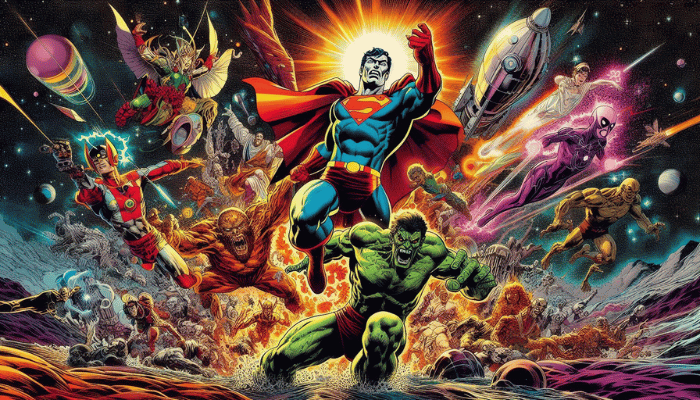
Remember those classic black and white comics? Pretty cool, but imagine the mind-blowing moment you saw your first full-color movie! The Silver and Bronze Ages (1950s-1980s) were like that for comic book art styles – a total explosion of color and detail! Here's what made them so awesome:
- Art Gets Fancy: Artists like Neal Adams and John Romita Sr. weren't messing around. Think of those epic superhero posters with dynamic poses, ripped muscles, and characters with a whole range of emotions etched on their faces? Yep, that's their legacy. It wasn't just about the "Bam!" and the "Pow!" anymore. These guys brought a level of detail and expressiveness that made superheroes feel more human than ever.
- Superheroes Get Real: Remember the invincible, always-smiling Superman of yore? Not so much anymore! Think of Wolverine in those early X-Men comics by John Byrne. He wasn't just brooding, he was practically a walking existential crisis! Superheroes were no longer these perfect beings – they grappled with real-life struggles, which meant the art style had to evolve too. Artists needed to capture the full range of human emotions, from brooding introspection to heroic determination.
- The World Gets Reflected: It wasn't just the superheroes that changed. The real world was changing too, with social issues like racism and drug use coming to light. Environmental concerns weren't some far-off concept anymore. These real-world issues found their way onto the pages too, reflected in the gritty realism of artist Bernie Wrightson's Swamp Thing comics. Those dark, swampy panels mirrored the growing environmental anxieties of the 1970s.
The Silver and Bronze Ages weren't just about flashy colors and complex emotions (though there were plenty of those too). This was a time when comic book art styles matured alongside their readers, reflecting the complexities of the real world. It was a period of incredible creativity and experimentation that paved the way for the diverse and stunning styles we see today. Stay tuned, because next, we'll delve into the Dark Age – a whole different kind of "profound"!
The Dark Age and Modern Influences (1980s-Present): Gritty, Grim, and Going Digital

The Silver and Bronze Ages were all about explosions and bright costumes, but the mood shifted dramatically in the 1980s. Buckle up, because we're entering the Dark Age of comic art styles! Here's what went down:
- Focus on the Shadows: Superheroes weren't just battling colorful villains anymore. The stories delved into darker themes, exploring psychological complexities and moral ambiguity. Think of the iconic graphic novel "Watchmen" by Alan Moore and Dave Gibbons. The art style mirrored this shift, with a focus on brooding characters, night settings, and a more muted color palette.
- Noir Influences: Remember those classic film noir movies with their dramatic lighting and chiaroscuro effects? Comic book artists in the Dark Age took inspiration from this style, using sharp contrasts and dramatic angles to create a sense of suspense and tension. Think of Frank Miller's groundbreaking work on "Batman: The Dark Knight Returns."
- Digital Revolution: And then came the game-changer: digital tools! No longer were artists limited to traditional pen and ink. The rise of digital tools allowed for more experimentation with colors, textures, and effects. Suddenly, anything was possible! This led to a huge explosion of creativity and diversity in comic book art styles.
Here's a fun fact: Did you know that digital tools like the medical imaging software ImageJ are not just for doctors? Comic book artists are using it to analyze and reinterpret hundreds of comic images in exciting new ways, opening up a world of creative possibilities within the art form! This unique application showcases just how versatile digital tools can be, transforming traditional comics into innovative masterpieces (Murel, 2023).
If you're looking to tap into the power of AI for your comic creation, check out the AI comic generator you've been waiting for from Dashtoon.
The Dark Age and the rise of digital tools weren't just about a darker aesthetic and fancy tech. It was a time when comic styles pushed boundaries, explored mature themes, and opened the door for a whole new era of artistic expression.
While the West was wrestling with its shadows, halfway across the globe, an entirely different art revolution was unfurling. Welcome to the vibrant world of Manga!
The Rise of Manga: A Global Phenomenon
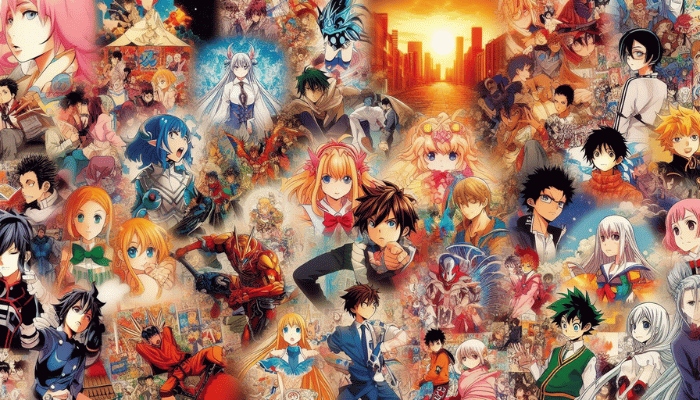
While the West was witnessing the evolution of superhero comics and the exploration of darker themes, a different artistic force was rising in the East: Manga.
Manga, the Japanese style of comic book art, has taken the world by storm. Here's what makes it unique:
Characteristics:
- Bold Lines: Unlike the often-detailed linework of Western comics, manga often utilizes bold, expressive lines to define characters and backgrounds.
- Dynamic Storytelling: Manga panels prioritize a clear flow of action and emotion, using creative panel layouts and dramatic angles to immerse readers in the story.
- Stylized Features: Character design in manga often prioritizes expressiveness over strict anatomical accuracy. Think of exaggerated features and dynamic expressions to convey emotions clearly.
Popularity and Influence:
Manga's popularity has transcended borders, influencing Western comic art styles and inspiring a global fanbase.
Here's a table to illustrate the growing market share of manga:
Subgenres:
The world of manga is vast and diverse, offering a variety of subgenres for every taste:
Whether you're a longtime manga fan or just getting curious, there's a whole world of stories and art styles waiting to be discovered!
Comparison of Toon and Manga Styles: A Tale of Two Expressive Forms
While both toons and manga are known for their vibrant visuals and emphasis on storytelling, there are some key distinctions between these artistic styles. Let's dive in and explore these unique approaches to comic book art:
Toon Style:
- Origin: Often associated with animation and early Western comics, particularly those aimed at younger audiences.
- Characteristics:
- Simplified Lines: Clean and bold outlines define characters and backgrounds, prioritizing readability over intricate details.
- Exaggerated Features: Cartoon characters frequently boast oversized eyes, expressive mouths, and exaggerated body proportions for comedic effect or to convey emotions clearly.
- Limited Color Palettes: Traditionally, a limited range of bright, primary colors is used, creating a visually appealing and instantly recognizable aesthetic.
Think of classic characters like Mickey Mouse, Bugs Bunny, and Scooby-Doo. Their simple yet iconic designs are hallmarks of the toon style.
Manga Style:
Since we already touched upon the characteristics of manga style in the earlier para. Let’s dive into the key differences between manga and toon style.
Here's a table summarizing the key differences:
Present: The Ageless Age and Digital Influence: Where Comic Book Art Goes Supernova!
Forget age restrictions, this is the Ageless Age of comic book art! We've blasted past the limitations of genre and style, and the results are nothing short of mind-blowing. Get ready, because we're about to explore a universe where superheroes fight alongside indie darlings, and digital tools have become an artist's secret weapon.
A Kaleidoscope of Cool: From Capes to Coffee Shops
The days when comics were all about greek body-bound heroes in tights saving the day? Well, those days are still pretty awesome (we're looking at you, Captain America!), but the comic book world has become a much more diverse playground.
Think dazzling sci-fi epics like "Saga," where a galaxy-spanning war is interwoven with a heartbreaking love story, all rendered in a breathtaking watercolor style. Talk about breaking the mold! Or how about diving into the gritty realism of "The Walking Dead," where the struggle for survival is depicted with stark black and white artwork that punches you right in the gut.
The point is, there's a comic book out there for every taste, from high-octane action to introspective character studies, all brought to life by a kaleidoscope of artistic approaches. It's like a buffet for your eyeballs, with something scrumptious for everyone.
The Digital Revolution: From Pencils to Pixels
Comic book creation is no longer only confined to pen and ink. Today's artists wield a mighty arsenal of digital tools, from sophisticated drawing software to mind-bending 3D modeling techniques.
Imagine a world where inking can be as smooth as silk, and colors explode from the page with a digital brushstroke. Artists can experiment with lighting and effects that would be impossible with traditional tools, creating visually stunning and immersive experiences.
Think of it as giving superheroes a whole new set of superpowers! The internet has also played a crucial role in this digital revolution. Online platforms have empowered independent creators to bypass traditional gatekeepers and share their work directly with fans. Suddenly, the world became their canvas, and the possibilities are truly endless.
So next time you pick up a comic book, take a moment to appreciate the artistry on display. From the meticulously crafted linework to the vibrant colors and innovative layouts, it's a testament to the talent and creativity of today's comic book artists.
Enter Dashtoon: A Digital Hub for Creators and Readers
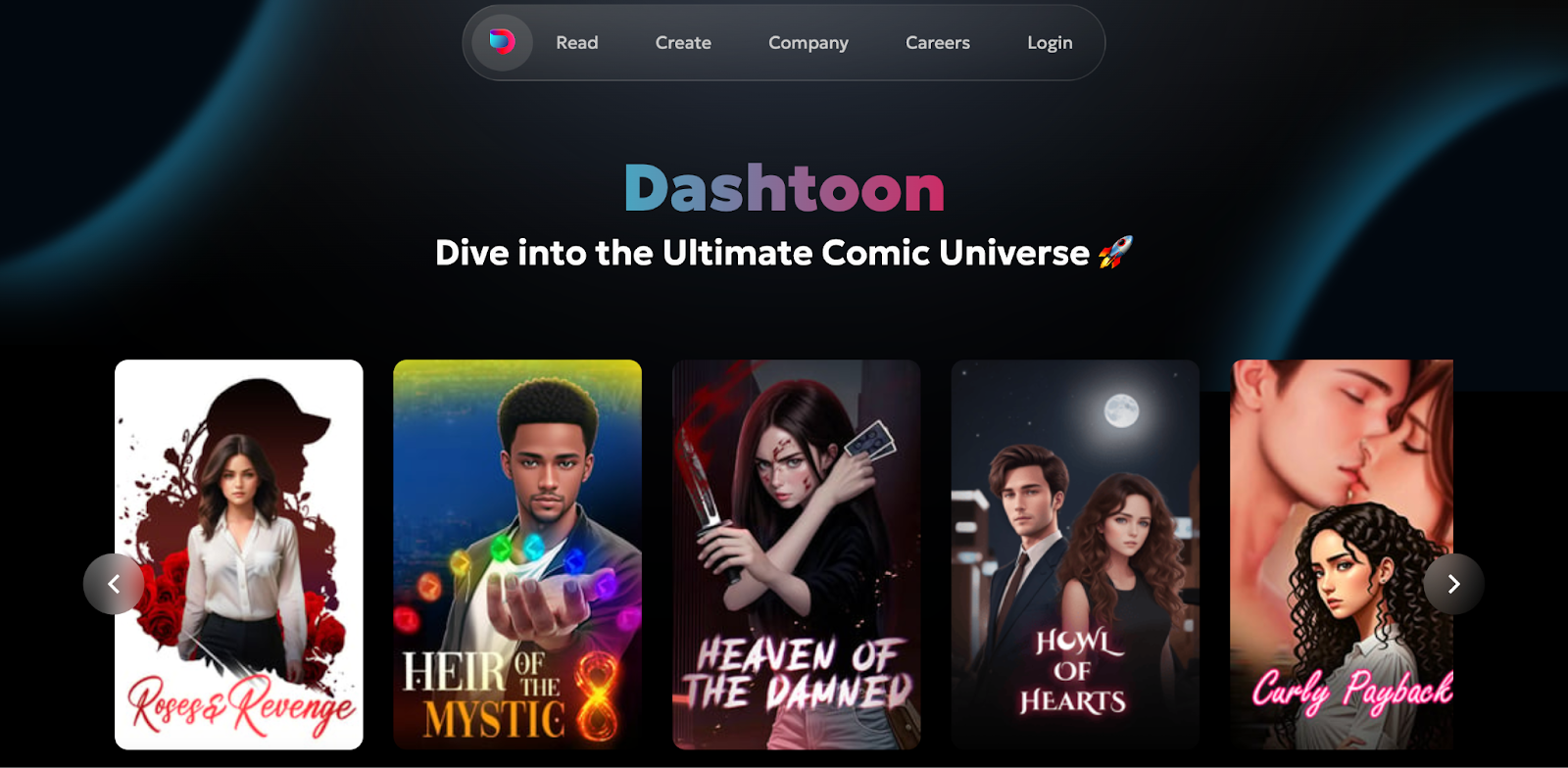
(Dashtoon Web)
Now, let's zoom in on a specific platform that's riding the digital wave: Dashtoon. This innovative platform caters to both aspiring comic book creators and ravenous readers. Here's what makes Dashtoon stand out:
- Creator-Friendly Tools: Dashtoon provides a suite of AI-powered tools that can streamline the comic creation process. Imagine having a digital assistant helping you convert storyboards into comic panels, removing backgrounds, or even fixing facial expressions in your artwork!
- Diverse Content Library: Whether you crave superhero sagas, heart-wrenching romances, or genre-bending adventures, Dashtoon's library offers a vast selection of comics for every taste.
- Global Appeal: Dashtoon transcends borders, offering comics in multiple languages and fostering a global community of creators and fans.
- Monetization Options: For aspiring artists, Dashtoon provides a creator program to showcase their work and potentially earn income through reader subscriptions.
With its focus on accessibility and innovation, Dashtoon represents a dynamic force in the ever-evolving landscape of comic book art. It's a space where creators can unleash their imaginations and readers can discover their next favorite comic book obsession.
A New Era: The Rise of Vertical Comics
Mobile devices have transformed how we consume content, and comic books are no exception. Taking the center stage are vertical comics, specifically designed for a seamless, on-the-go reading experience on your smartphone. Imagine a unique art style that unfolds through continuous scrolling, perfect for those quick bursts of reading.
Convenience Meets Innovation:
Vertical comics offer more than just ease of use. They represent a platform for innovative storytelling techniques. Platforms like Dashtoon empower creators to explore this format and reach a global audience.
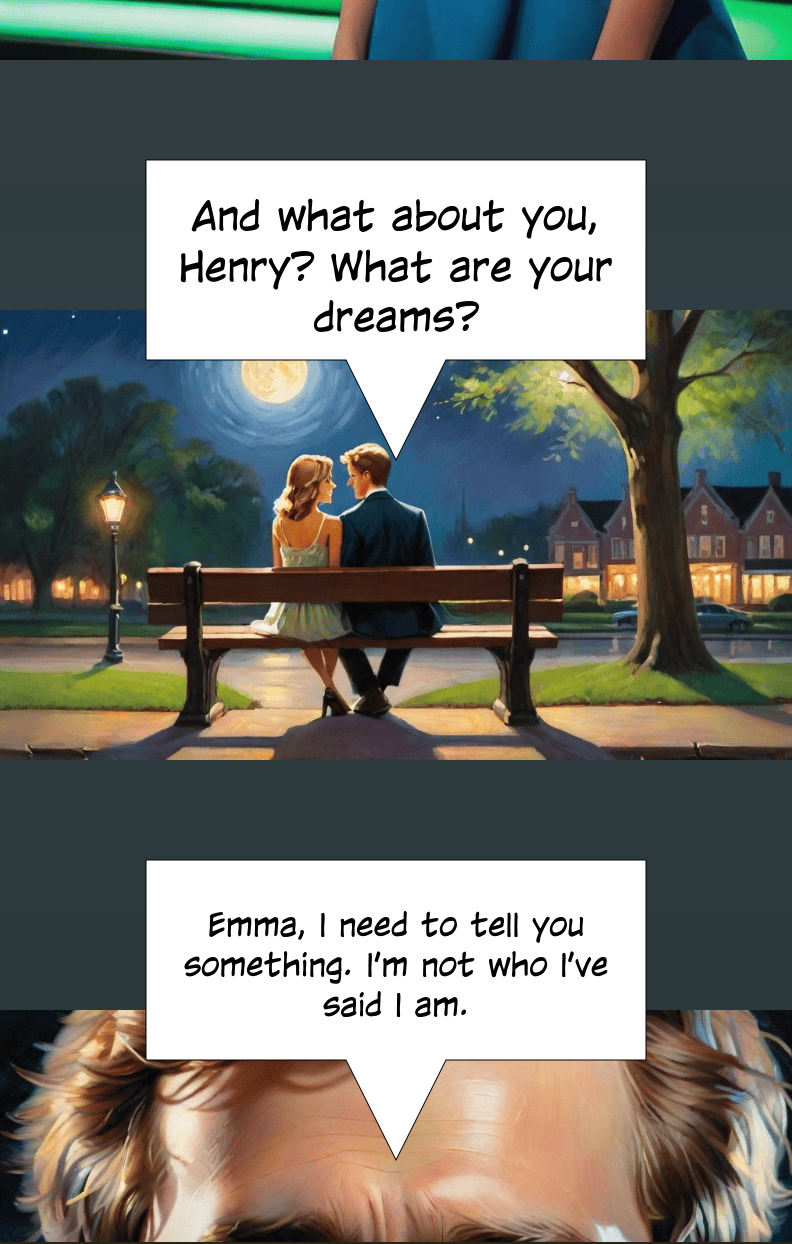
(Dashtoon’s vertical comic view screenshot)
The Future Beckons:
Whether you're a seasoned comic fan or just starting out, vertical comics offer a fresh and engaging way to experience captivating stories and stunning visuals. So next time you're browsing your phone, keep an eye out for them!
Now that we’ve surfed the digital wave and seen the full spectrum of comic book art styles, let's zoom out and see what all this means for the future of comics.
Conclusion: A Thriving Canvas
Comic book art isn't just about superheroes punching bad guys (though that's fun too!). It's a dynamic universe constantly evolving with new styles and technology.
Unending Evolution: From bold toons to nuanced manga, new artistic influences and technology keep pushing boundaries. Imagine webtoons with their scrolling format or 3D modeling creating stunning special effects!
A Call to Artists: This diversity welcomes exploration! Don't be afraid to experiment, develop your own style, and contribute your voice to this ever-evolving art form.
The Future is Connected: Technology provides artists with powerful tools, while digital platforms( now there is AI generation too!) and global communities foster a vibrant exchange of ideas. This interconnectedness ensures comic book art will continue to captivate audiences worldwide.
So, the next time you pick up a comic book, appreciate the artistry on display. It's a testament to the power of visual storytelling, transporting readers to fantastical realms for generations to come. And if you're an aspiring artist, consider exploring platforms like Dashtoon to unleash your creativity and join this thriving art form! Dashtoon Studio is the ultimate platform for comic enthusiasts to enhance their comic creation skills.
Read Next: Creating Your Own Comic Book Design | Crafting Your First Comic Book
